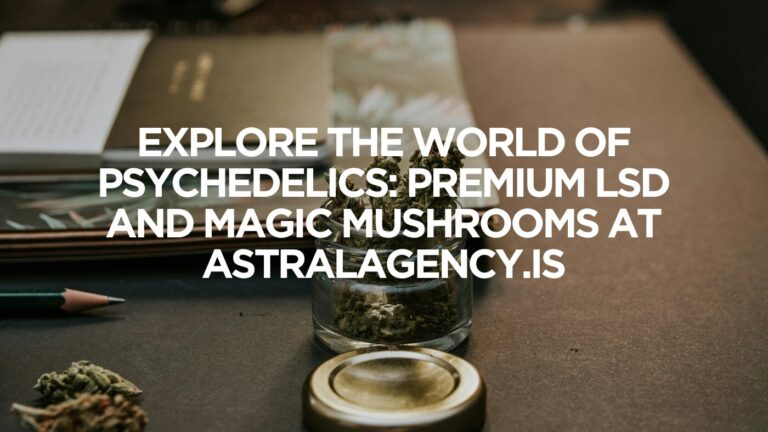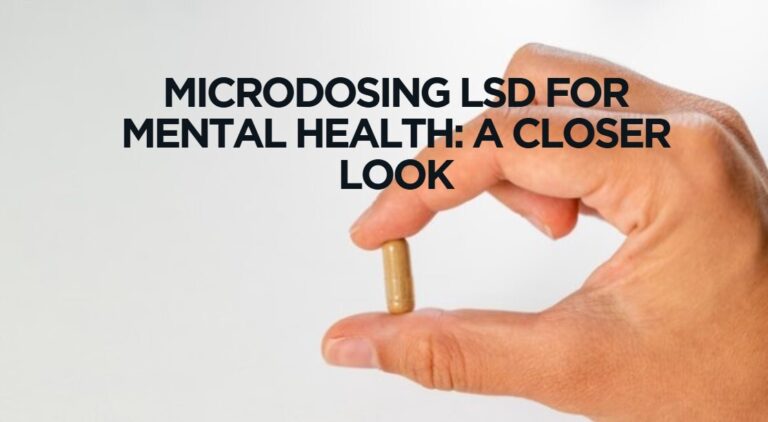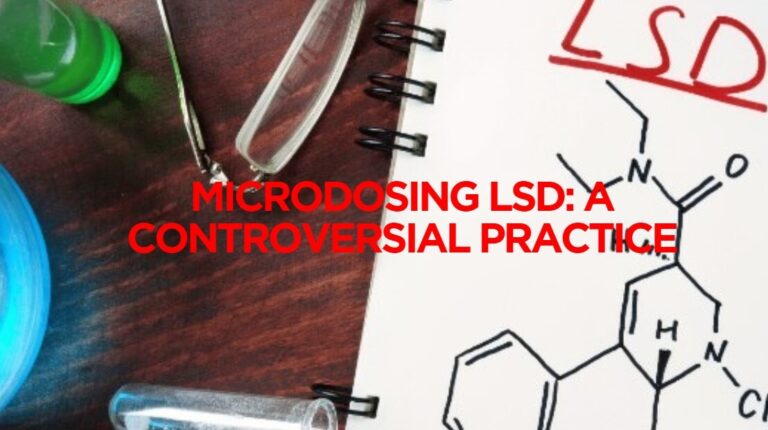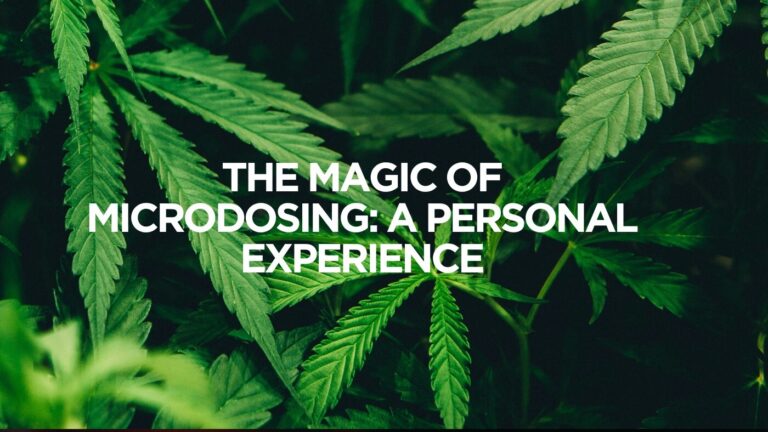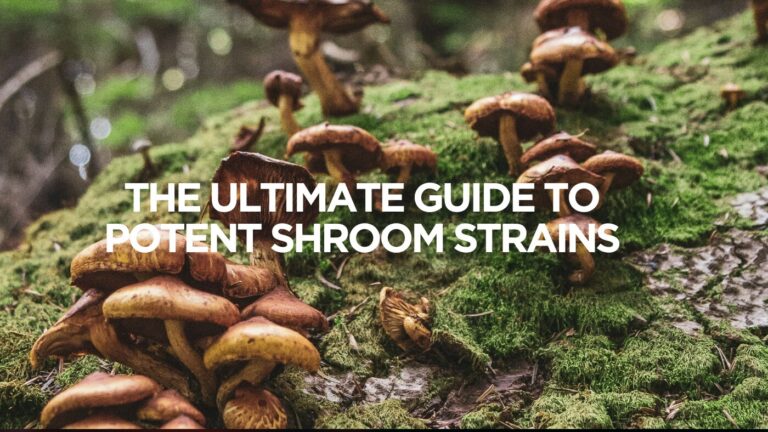Psychedelic therapy is making a serious comeback. Remember when people thought psychedelic drugs were all about wild trips and far-out experiences? Well, the world is taking another look, and this time, it’s not just about the wild stories.
There’s a growing wave of interest in psychedelic research, and it’s not slowing down. From ancient rituals to today’s cutting-edge clinical trials, psychedelics are stepping into the spotlight for a whole new reason. In this blog, we’re diving into the world of psychedelic therapies. We’re focusing on the science, the research, and what’s next for these fascinating substances.
The History of Psychedelic Therapy
Psychedelic therapy isn’t some new-age trend—it’s got deep roots that go way back. Indigenous cultures were the first to unlock the power of psychedelic drugs, using them in sacred rituals and healing practices. For them, these substances weren’t just tools for exploring the mind; they were a bridge to spiritual realms.
Fast forward to the early 20th century, when Western scientists started to take notice. They began studying these psychedelic therapies with curiosity, hoping to understand their effects on the human mind. This early psychedelic research laid the groundwork for what was to come.
1960s Research and Controversy: A Rollercoaster of Hype and Backlash
The 1960s was a wild ride for psychedelics. The era of peace, love, and experimentation saw a surge in interest in psychedelic drugs. Researchers dived headfirst into clinical trials, exploring everything from major depressive disorder to other psychological conditions.
The buzz was real, and the potential seemed limitless. But as quickly as it rose, the movement hit a wall. Psychedelics became synonymous with counterculture, and the backlash was swift. Legal restrictions came down hard, and much of the promising psychedelic research was shut down. What started as a wave of excitement turned into a controversial chapter in the history of psychedelic therapies.
Modern Resurgence: A New Era of Psychedelic Research
Fast forward to the 21st century, and we’re seeing a whole new chapter in the story of psychedelics. Thanks to changes in legal status and a shift in public perception, psychedelic therapies are back in the spotlight. This time, the focus is on the science, with renewed clinical trials and studies diving deep into the potential of these substances.
The modern resurgence pushes boundaries and exploring the unknown. Today, you can even buy shrooms online or look into shrooms delivery in Canada, reflecting just how far we’ve come. Malabar Shrooms are a popular choice for those looking to enhance their experiences with psychedelic therapy.
Current State of Psychedelic Therapy
Right now, psychedelic research is seriously heating up. We’re talking about a full-on revival, with scientists diving into clinical trials to explore the therapeutic potential of these fascinating substances. These studies are more sophisticated than ever, using cutting-edge methods to dig deep into how psychedelic drugs affect the brain and behavior.
Scientists are looking at everything—how long these substances take to kick in, their impact on our thought processes, and how they might be used in different settings.
Psychedelic Substances in Use
Let’s talk about the substances that are grabbing all the attention in the world of psychedelic research. First up, psilocybin is the active ingredient in those most potent shrooms you’ve probably heard about.
But it’s not just about shrooms. MDMA, often associated with party scenes, is being explored for its therapeutic potential in settings far removed from the dance floor. LSD, the classic psychedelic, is also back under the microscope, with researchers eager to understand its effects in controlled environments.
And then there’s ketamine. This one’s a bit different but still very much part of the conversation. It’s not a traditional psychedelic, but it’s being studied for its unique properties and how it might fit into the broader landscape of psychedelic therapies.
Mechanisms of Action: How Psychedelics Work in the Brain
What exactly happens in our brains when we take psychedelic drugs? When you take something like psilocybin, your brain doesn’t just sit back and relax. It gets to work in some fascinating ways.
First off, psychedelics are known to shake up the brain’s usual routine. One significant change happens with something called neuroplasticity. In simple terms, neuroplasticity is your brain’s ability to reorganize itself—like giving your mind a fresh coat of paint. When you dive into psychedelic therapies, you’re actually encouraging your brain to create new connections. It’s like upgrading from dial-up to fiber optic.
Another key player here is the default mode network (DMN). This is the part of your brain that’s all about your self-identity and daydreaming. When you take psychedelics, the DMN gets a little less dominant, allowing different parts of your brain to start chatting with each other in ways they usually wouldn’t. This can lead to some pretty unique experiences.
Psychological Impact: Beyond the Brainwaves
Now, let’s talk about the psychological effects—what you actually feel and experience. One of the most talked-about effects of psychedelic drugs is ego dissolution. Ego dissolution is when your sense of self becomes less rigid. Instead of seeing yourself as separate from the world, you might feel more connected to everything around you. It’s like zooming out and seeing the bigger picture.
This shift in perspective can lead to deep emotional processing. People often find themselves reflecting on their lives, thoughts, and behaviors in ways they haven’t before. And that’s where the therapeutic potential of psychedelics really starts to shine, even without making any health claims.
Incorporating Avery Albino Shrooms could offer unique insights during psychedelic therapy sessions.
Cultural and Societal Perspectives on Psychedelics
Let’s start with how people see psychedelic drugs today versus back in the day. For a long time, psychedelics had a pretty bad rap. They were lumped together with other substances that society frowned upon, largely thanks to the media’s portrayal during the 1960s and 70s. Back then, the focus was on the negative aspects, and public perception quickly soured. But times are changing.
Nowadays, thanks to fresh psychedelic research and the buzz around clinical trials, the public’s attitude towards these substances is shifting. We’re starting to see a more balanced view—one that recognizes both the history and the potential of psychedelics. The media has played a big role in this turnaround, spotlighting stories of personal growth and exploration.
Cultural Significance: Psychedelics in Rituals and Spiritual Practices
Psychedelics aren’t just a modern-day trend. They’ve been around for centuries, deeply embedded in the cultural practices of various societies. Indigenous cultures, for instance, have long used substances like psilocybin—found in the most potent shrooms—in their spiritual and healing rituals. These practices were (and still are) a way to connect with the divine, explore consciousness, and gain insights that aren’t easily accessible in everyday life.
In these communities, psychedelics hold a cultural significance that goes beyond just their effects. They’re seen as sacred tools, used responsibly and with great respect. This cultural backdrop has heavily influenced how psychedelics are perceived and used in different parts of the world today.
Trans Envy Shrooms might provide a distinctive perspective when used within a psychedelic therapy context.
Societal Impact: The Influence of Psychedelics on Culture
As psychedelics make their way back into the mainstream, we’re starting to see their influence on culture, norms, and even social structures. The integration of psychedelics into society could shake things up in ways we’re only beginning to understand. For one, there’s the potential to challenge existing views on consciousness, spirituality, and even mental well-being (without making any health claims, of course).
The growing interest in shrooms in Canada and the convenience of shrooms delivery in Canada highlight just how much the landscape is changing. What used to be a fringe interest is now moving towards the center, influencing everything from art and music to personal identity and community values.
Global Legal Overview: Where Do Psychedelics Stand Today?
When it comes to the legal status of psychedelic drugs, things can get pretty complicated. Different countries have different rules, and it’s not always clear-cut. In some places, psychedelics like psilocybin are strictly controlled substances. Others are finding a legal gray area where people can buy shrooms online or even explore shroom delivery Canada services.
In North America, for example, Canada is making strides in embracing psychedelics for therapeutic potential, especially in research settings. Meanwhile, in the United States, the legal landscape is a patchwork. Some states are taking steps toward decriminalization or allowing clinical trials, while others still have strict bans in place. Over in Europe, countries like the Netherlands have long allowed the sale of truffles, which contain psilocybin, but other nations remain much more conservative.
The global perspective is diverse and rapidly evolving, with each region moving at its own pace when it comes to embracing or restricting psychedelic therapies.
Recent Legislative Changes: The Tide Is Turning
If you’ve been paying attention to the news, you’ve probably noticed that things are starting to change. Recent legislative moves have begun to reshape the landscape for psychedelic research and the use of these substances. For instance, in 2020, Oregon made headlines as the first U.S. state to legalize psilocybin for supervised therapeutic use.
Similarly, in Canada, there’s growing momentum behind the idea of using psychedelics in a controlled, legal context. With changes in regulations, more people are able to access shrooms in Canada for research purposes. These legislative shifts are making it easier to dive into psychedelic therapies without the legal risk that once loomed large.
Looking ahead, the legal landscape for psychedelics is likely to keep evolving. As more clinical trials produce data, governments may be more willing to reconsider their stance on psychedelics.
Challenges and Controversies in Psychedelic Therapy
When we talk about psychedelic therapies, one of the biggest questions on the table is: Who should have access? As more people become interested in exploring the therapeutic potential of psychedelic drugs, we’re faced with some tricky ethical debates. Should these substances be available to everyone or only to those who can afford them? What about those who need them the most but have the least access?
It’s not just about access, though. There’s also the issue of how these therapies are distributed. If shrooms in Canada become more mainstream, how do we make sure that everyone who wants to explore shrooms delivery in Canada can do so safely and responsibly? The ethical conversation around psychedelics is just beginning, and it’s something we’ll need to navigate carefully as the landscape evolves.
Potential for Misuse: Staying on the Safe Side
Let’s be honest—when it comes to psychedelic drugs, there’s always a risk of misuse. The potential for things to go sideways is there. That’s why education and regulation are so important.
If we want to see psychedelic therapies become a safe and influential part of our society, we need to put safeguards in place. This means clear guidelines on how to use these substances responsibly. The goal is to minimize the risks and make sure that people are informed and prepared. It’s all about finding that balance between accessibility and safety.
Public Misinformation: Cutting Through the Noise
We’ve all seen the headlines—psychedelics being hyped as miracle cures or demonized as dangerous drugs. The reality is usually somewhere in the middle, but public misinformation is a huge challenge. With so much information (and misinformation) out there, it’s easy to get confused about what’s true and what’s not.
For instance, some might overestimate the therapeutic potential of psychedelic drugs, while others might downplay the benefits because of outdated stereotypes. The key is to make sure people are getting accurate, balanced information. This is where psychedelic research comes in, providing us with real data that can help cut through the noise.
Final Words
The future of psychedelic therapies seems both promising and challenging. With more clinical trials on the horizon and a better understanding of their therapeutic potential, psychedelics are poised to play a larger role in our society. But let’s keep it real—there’s still a lot of work to be done. As we push forward, we need to stay focused on responsible use, accurate information, and thoughtful regulation.
The world of psychedelics is rapidly evolving, and it’s an exciting time to be part of the conversation. Keep exploring, keep learning, and let’s see where this journey takes us. After all, we’re just scratching the surface of what psychedelic therapies could mean for the future.
If you’re exploring different options for your next session, consider the Hippy Flip Party Pack. Checking out Kitty Molly’s Clearance section can help you find affordable options to complement your psychedelic therapy journey.
Psychedelic Therapy FAQs
What are the most potent shrooms?
The most potent shrooms are generally strains like Penis Envy, Albino A+, and Psilocybe Azurescens. These strains are renowned for their high levels of psilocybin, the compound responsible for their intense effects. Penis Envy, in particular, is often considered one of the most powerful strains due to its dense concentration of active compounds. When choosing potent shrooms, it’s important to be aware of their strength and start with a lower dose, especially if you’re new to these varieties.
How long does it take for shrooms to kick in?
Shrooms typically take about 20 to 40 minutes to kick in after ingestion. However, this timeframe can vary depending on factors such as your metabolism, the dosage, and whether you’ve eaten beforehand. The effects usually start with a mild euphoria or changes in perception, gradually intensifying as the full effects set in. For a more controlled experience, it’s recommended to wait at least an hour before deciding to take more.
Can you buy shrooms online?
Yes, you can buy shrooms online in areas where it is legally permitted. Several online dispensaries provide a wide range of shroom strains, offering options like dried mushrooms, microdoses, and even edibles. These services often include discreet shipping to ensure privacy. Before purchasing, check the legal status of shrooms in your region to avoid any legal issues.
What are the strongest shroom strains?
The strongest shroom strains include Penis Envy, Psilocybe Azurescens, and Tidal Wave. These strains are known for their high psilocybin content, which leads to more intense experiences. Penis Envy, for example, is often recommended for experienced users due to its powerful effects. If you’re considering these strains, it’s wise to research and understand their potency before use.
How does shroom delivery work in Canada?
Shrooms Delivery Canada services operate in regions where shrooms are legally available. Customers can browse online dispensaries, select their desired products, and place an order for home delivery. The process is usually discreet, with packaging designed to protect privacy. Delivery times can vary based on location, but most services offer tracking so you can monitor your order’s progress.
